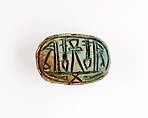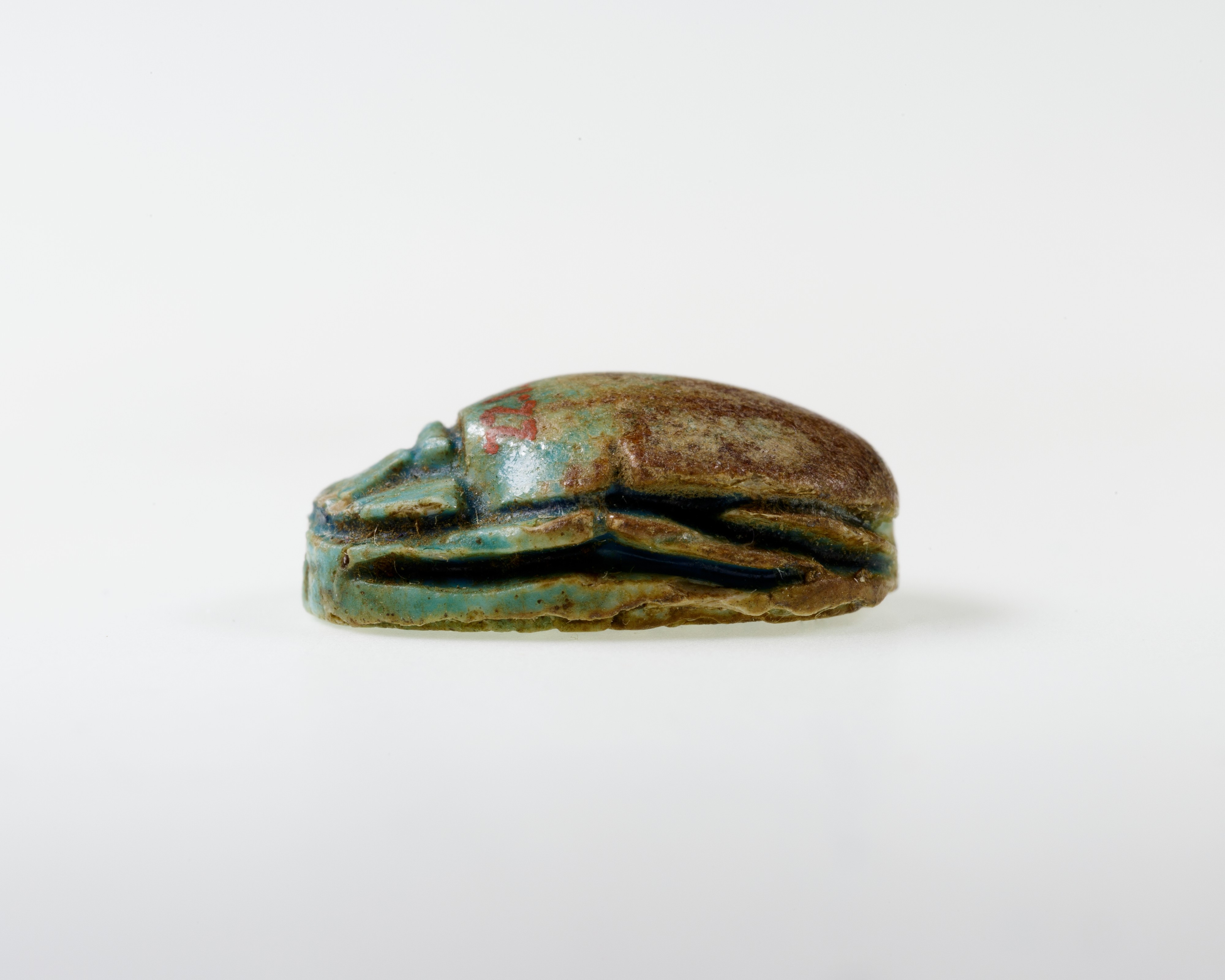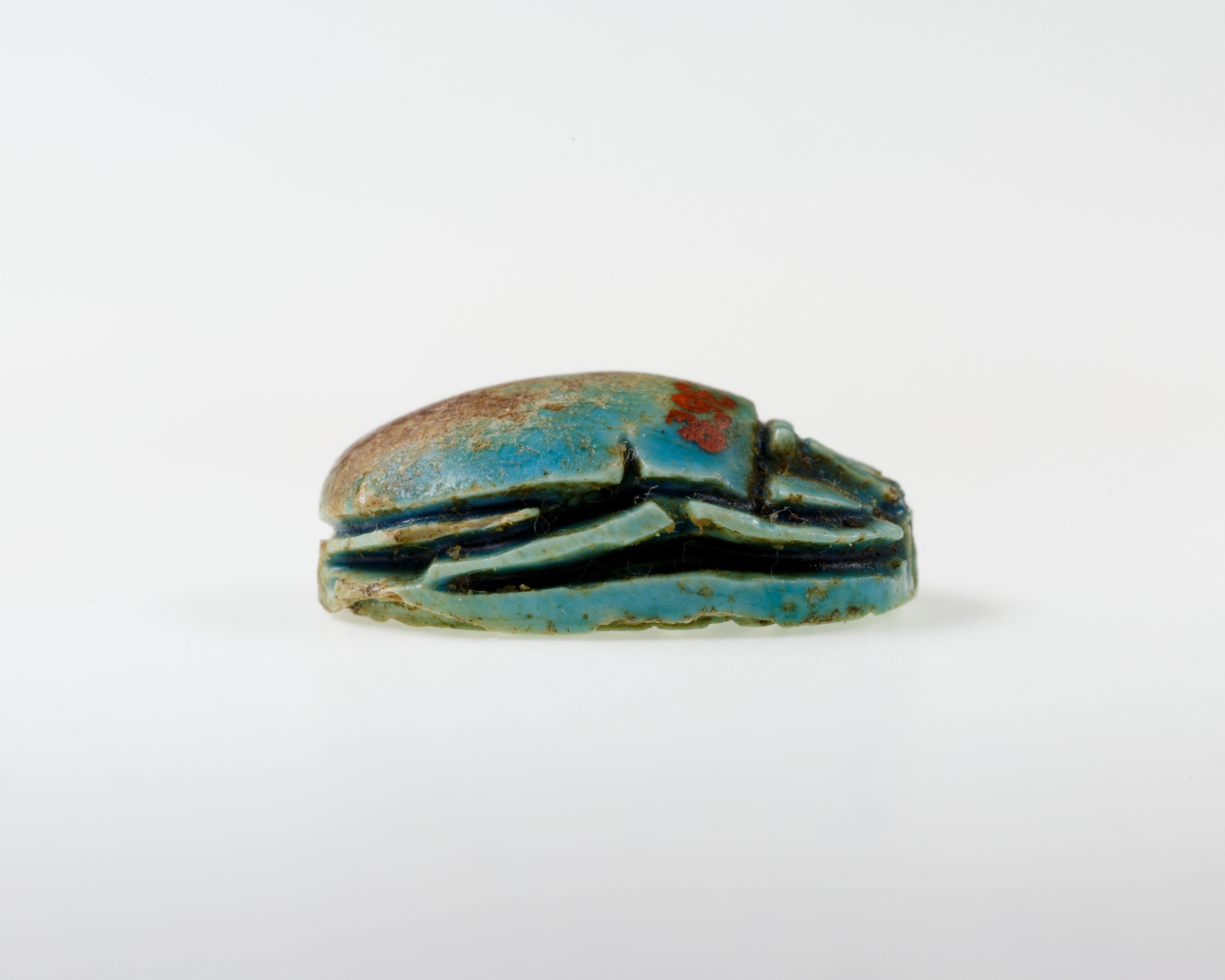Scarab Incised with Hieroglyphs
Middle Kingdom
The majority of design scarabs of the late Middle Kingdom (late Dynasty 12–Dynasty 13, ca. 1850 –1640 B.C.) are decorated with symmetric compositions of hieroglyphs and/or scrolls. These signs are not meant to form words but are chosen for their positive, protective meaning.
The composition on this scarab shows a sign of life (ankh) flanked by Red Crowns and the sign for good and beautiful (nefer). Below are two papyrus stems, crossing each other. This scarab is, however, likely of Canaanite manufacture and inspired by Egyptian Middle Kingdom symmetric designs.
Due to rights restrictions, this image cannot be enlarged, viewed at full screen, or downloaded.
This artwork is meant to be viewed from right to left. Scroll left to view more.





